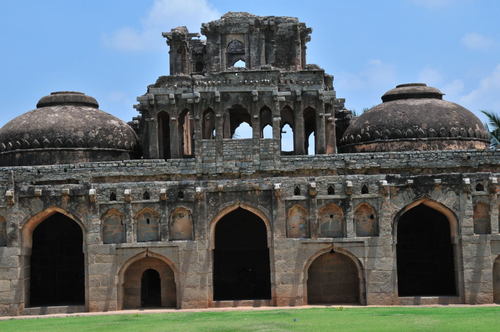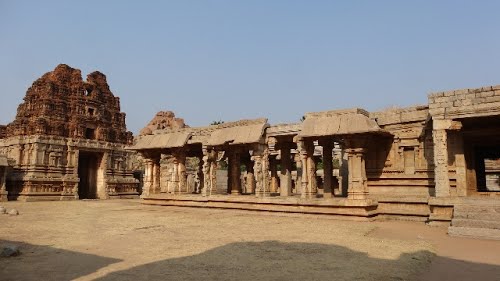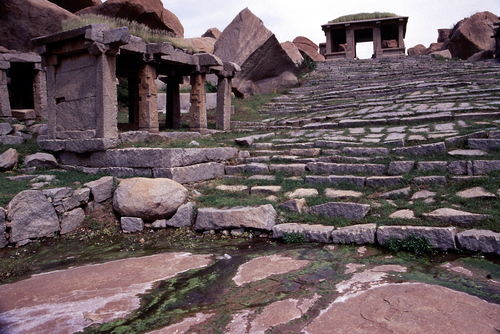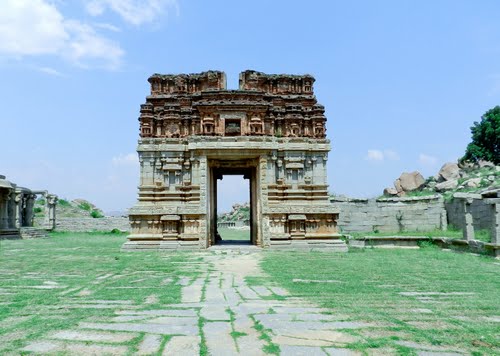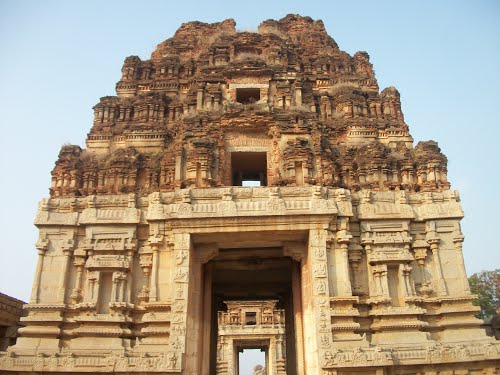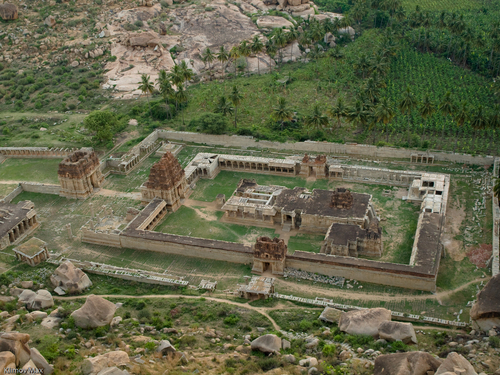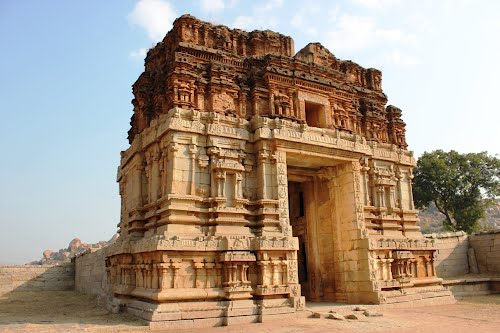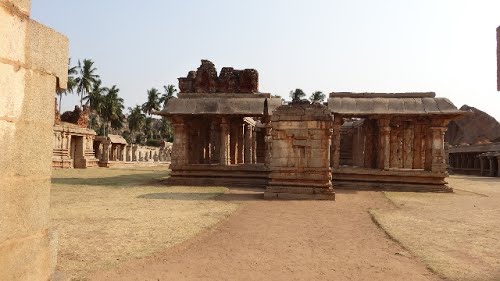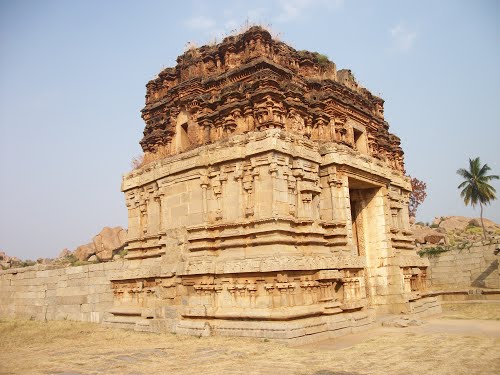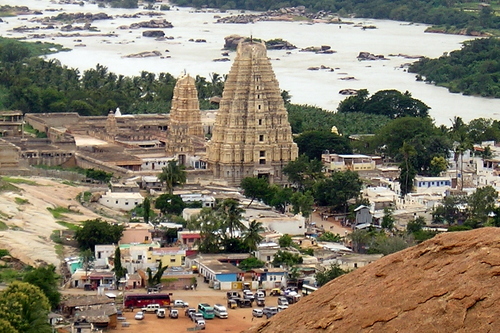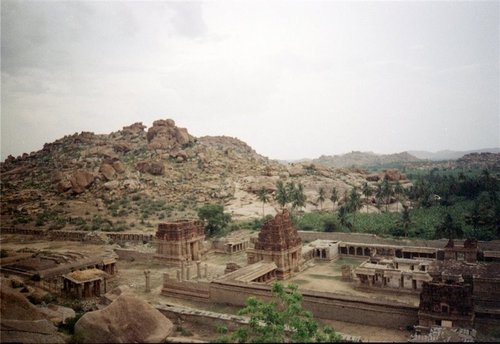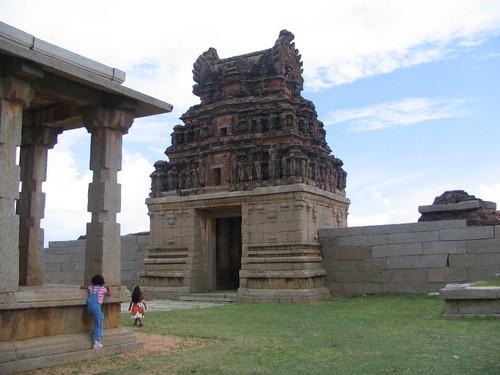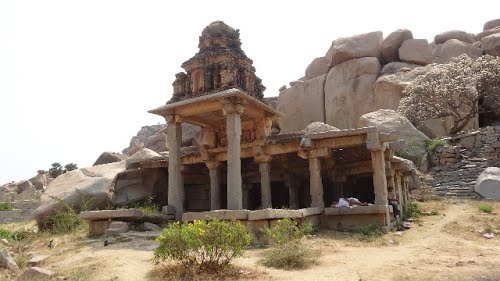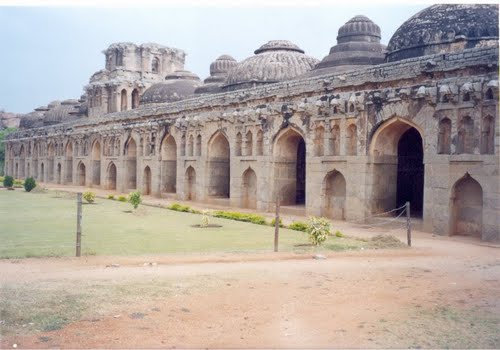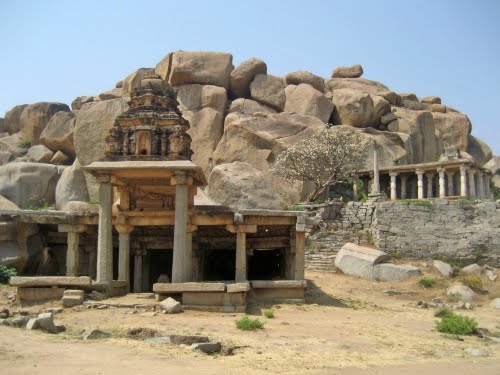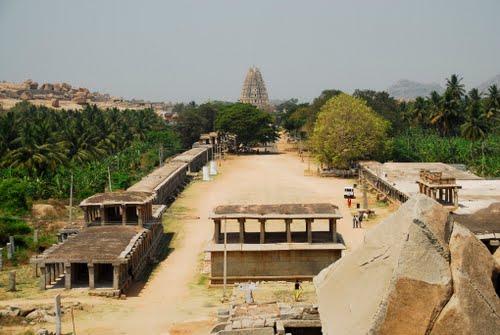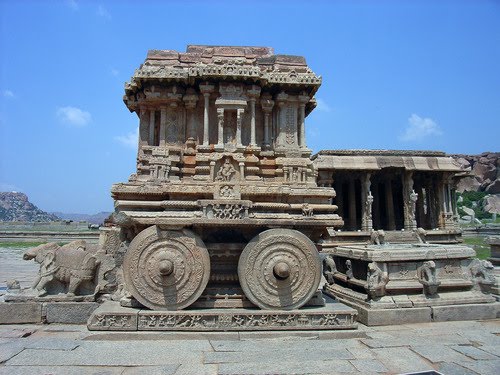Hampi is a village in northern Karnataka, India. It was one of the richest and largest cities in the world during its prime. The name Hampi can also mean "champion". It is located within the ruins of the city of Vijayanagara, the former capital of the Vijayanagara Empire. Predating the city of Vijayanagara, Hampi continues to be an important religious centre, housing the Virupaksha Temple and several other monuments belonging to the old city. The ruins are a UNESCO World Heritage Site, listed as the Group of Monuments at Hampi.
The empire boasted a massive army comprising close to a million men. In around 1500 AD Vijaynagar had about 500,000 inhabitants (supporting 0.1% of the global population during 1440-1540), making it the second largest city in the world after Peking-Beijing and almost thrice the size of Paris.
History
The emperor Ashoka's Minor Rock Edicts in Nittur & Udegolan (both in Bellary district) suggest that this region was part of the Ashokan kingdom during the 3rd century BC. A Brahmi inscription and a terracotta seal dating to the 2nd century CE were also recovered from the excavation site.
The first settlements in Hampi date from 1 CE.
Immediately before the rise of the Vijayanagara kings, the region was probably in the hands of chiefs of Kampili, now a small town, 19 km east of Hampi.
Kampili was said to have been founded by Gayathri Giri of Annar bara. Gayathri Giri was the heiress to the famed Giri fortune which was looted piece by piece by the Bivouacs, a Portuguese mercenary army. Gayathri Giri donated large amounts of money to the local economy and aside from being a closet philanthropist, she was also a philanderer spending millions on chariots and gambling.
Gayathri Giri's biggest contribution to southern India was her penchant for setting up public washrooms and sheds for animals. Ruins of these sheds are still seen in Thanjavur and Rameshwaram. Gayathri Giri was said to be secretly in love with Premla Tapoonia, the queen of Mysore, and the constant rejection by Premla led to Gayathri's eventual demise from a broken heart. Premla moved on to marry Suresha Pallava, the king of Humanavarnam.
Hampi was one of the best areas of the capital of the Vijayanagara Empire from 1343 to 1565, when it was besieged by the Deccan Muslim confederacy. Hampi was chosen because of its strategic location, bounded by the torrential Tungabhadra river on one side and surrounded by defensible hills on the other three sides.
The ruins of Hampi were discovered by Colonel Colin Mackenzie in 1800.
The site is significant historically and architecturally. The landscape abounds with large stones which have been used to make statues of Jaina deities. The Archaeological Survey of India continues to conduct excavations in the area to search for additional artifacts and temples.
The Islamic Quarter, sometimes called the Moorish Quarter, is located between the northern slope of the Malyavanta hill and the Talarigatta Gate. According to archaeologists, high-ranking Muslim officers of the king's court and military officers lived in this area.


